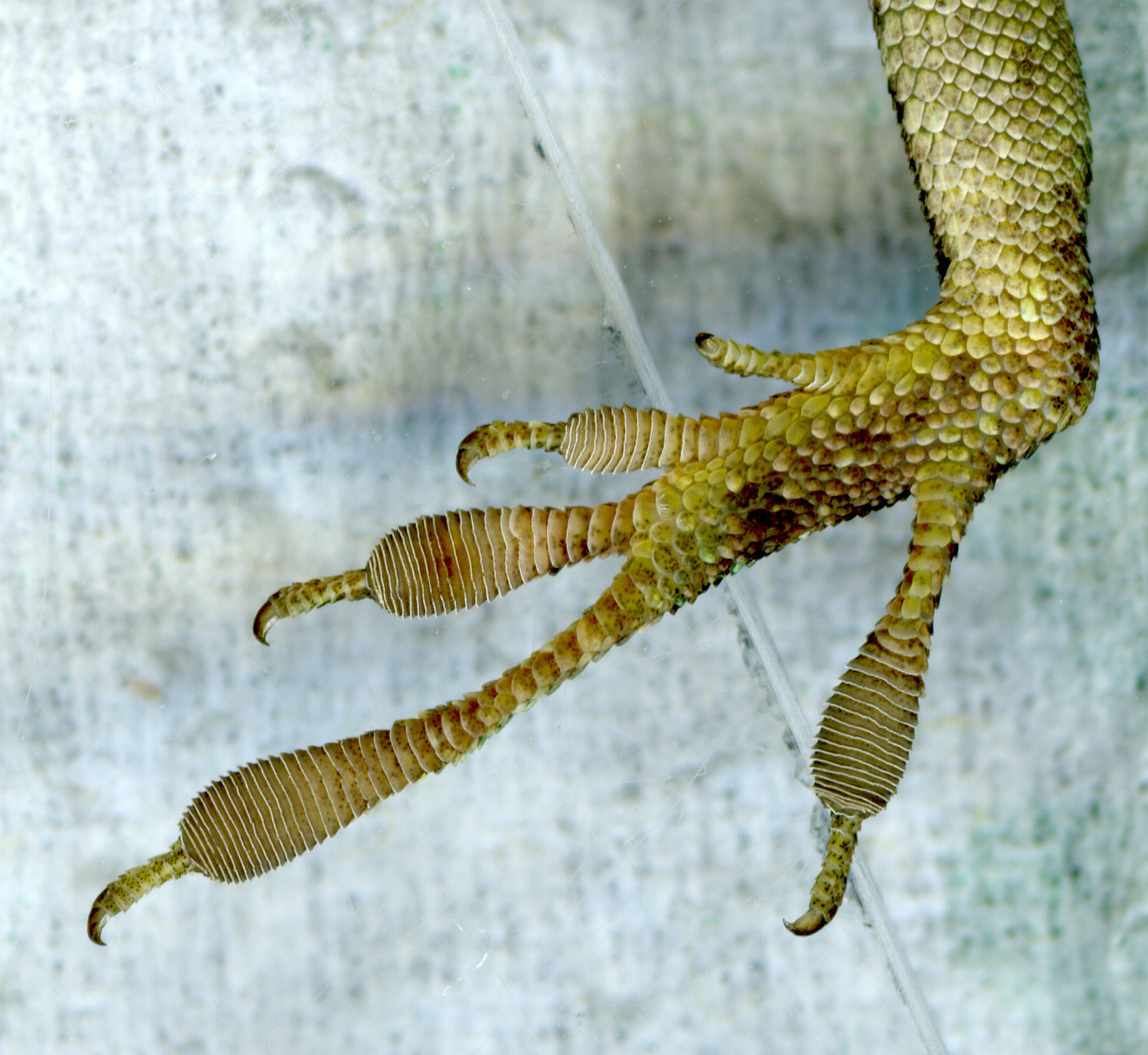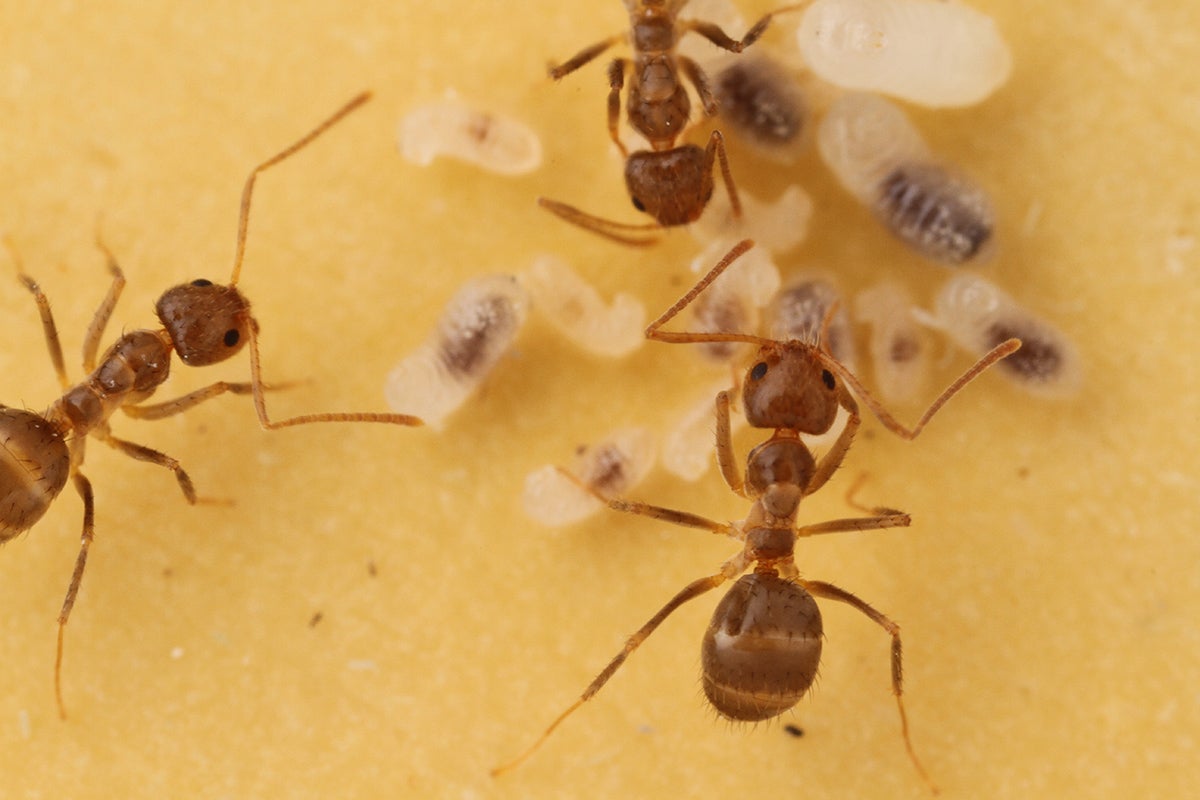Florida Lizards Evolve Rapidly, Within 15 Years and 20 Generations
Competition between brown and green anoles for the same food and space may be driving adaptations of the green anoles

Native green anoles (left) have evolved better gripping feet in response to an invasion of brown anoles (right) on islands in Florida. Credit: Todd Campbell and Adam Algar.
Scientists working on islands in Florida have documented the rapid evolution of a native lizard species — in as little as 15 years — as a result of pressure from an invading lizard species, introduced from Cuba.
After contact with the invasive species, the native lizards began perching higher in trees, and, generation after generation, their feet evolved to become better at gripping the thinner, smoother branches found higher up.
The change occurred at an astonishing pace: Within a few months, native lizards had begun shifting to higher perches, and over the course of 15 years and 20 generations, their toe pads had become larger, with more sticky scales on their feet.
"We did predict that we'd see a change, but the degree and quickness with which they evolved was surprising," said Yoel Stuart, a postdoctoral researcher at The University of Texas at Austin and lead author of the study appearing in the Oct. 24 edition of the journal Science.
"To put this shift in perspective, if human height were evolving as fast as these lizards' toes, the height of an average American man would increase from about 5 foot 9 inches today to about 6 foot 4 inches within 20 generations — an increase that would make the average U.S. male the height of an NBA shooting guard," said Stuart. "Although humans live longer than lizards, this rate of change would still be rapid in evolutionary terms."

This is a flatbed digital scan of the left hind foot of Anolis carolinensis, or green anole. Toe pad measurements were taken on the expanded scales at the end of the longest toe. Credit: Yoel Stuart/University of Texas at Austin
The native lizards studied, known as Carolina anoles or green anoles, are common in the southeastern U.S. The invasive species, Cuban anoles or brown anoles, are native to Cuba and the Bahamas. Brown anoles first appeared in South Florida in the 1950s, possibly as stowaways in agricultural shipments from Cuba, and have since spread across the southeastern U.S. and have even jumped to Hawaii.
This latest study is one of only a few well-documented examples of what evolutionary biologists call "character displacement," in which similar species competing with each other evolve differences to take advantage of different ecological niches. A classic example comes from the finches studied by Charles Darwin. Two species of finch in the Galápagos Islands diverged in beak shape as they adapted to different food sources.
The researchers speculate that the competition between brown and green anoles for the same food and space may be driving the adaptations of the green anoles. Stuart also noted that the adults of both species are known to eat the hatchlings of the other species.
"So it may be that if you're a hatchling, you need to move up into the trees quickly or you'll get eaten," said Stuart. "Maybe if you have bigger toe pads, you'll do that better than if you don't."
Stuart's co-authors are Todd Campbell at the University of Tampa; Paul Hohenlohe of the University of Idaho; Robert Reynolds of the University of Massachusetts, Boston; Liam Revell at the University of Massachusetts, Boston; and Jonathan Losos at Harvard University.
Support for this research was provided by the National Science Foundation, the National Institutes of Health, The University of Tennessee, Knoxville, and the Museum of Comparative Zoology at Harvard University.
Native green anoles have evolved better gripping feet in response to an invasion of brown anoles on islands in Florida. Credit: Todd Campbell and Adam Algar.
Update: Stuart's study was highlighted in the New York Times' article, Competition Drives Quick Evolution of Lizard’s Feet.



